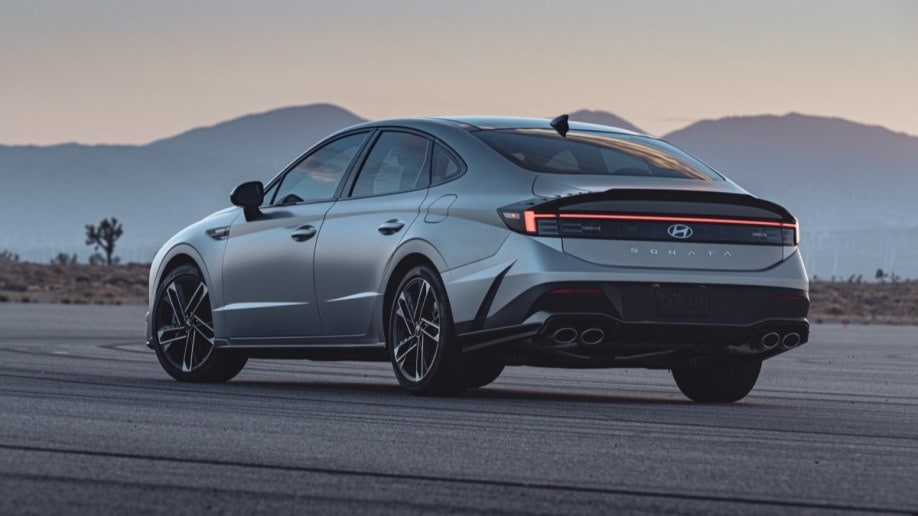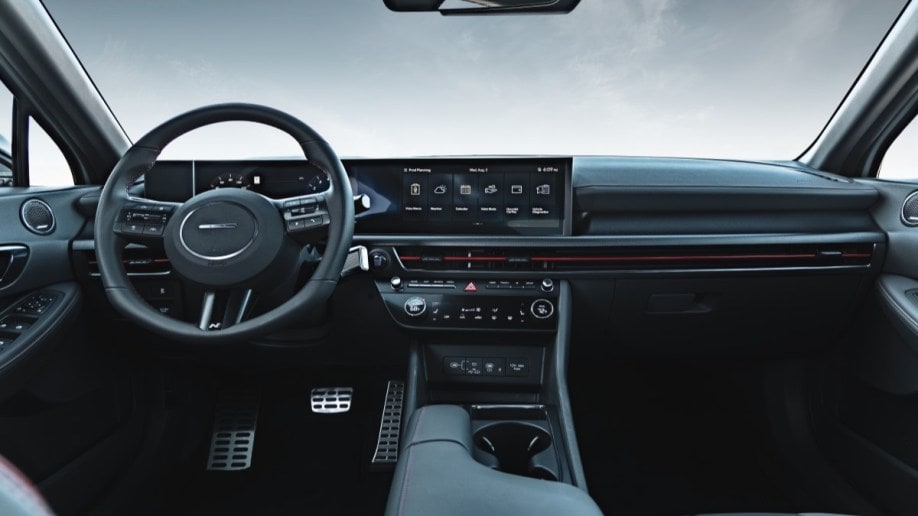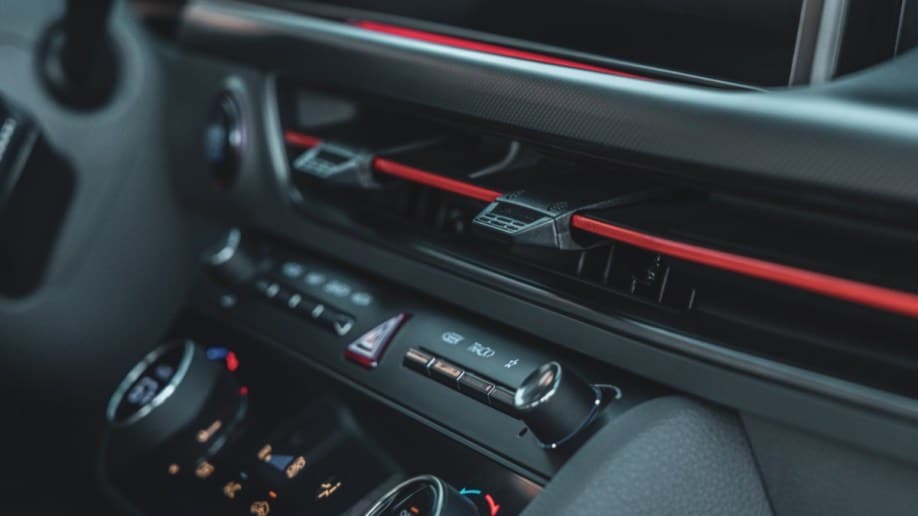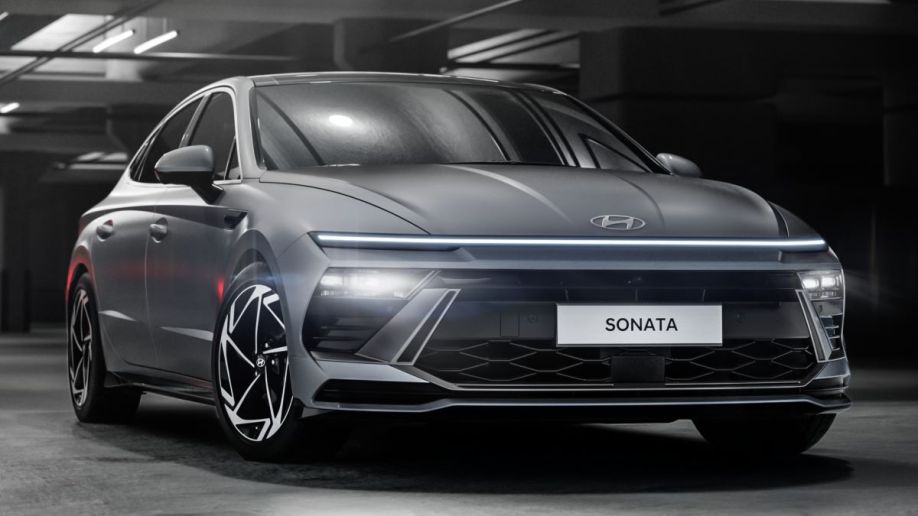
Let’s get the new look out of the way first.
New Face, Big Impact
This may not be the first time you’ve seen the new Sonata. But you won’t mind looking twice. Hyundai unveiled the new look globally in March without revealing details about the car.
It’s a testament to how minor design changes can completely remake the look of something. In profile, the 2024 Sonata doesn’t look very different than the 2023 Sonata. But from head-on, it’s an entirely different car.
That effect comes because designers eliminated the droopy nose the car has worn since its last wheels-up redesign (for the 2020 model year). In its place, they drew a wide, straight fascia accented by a horizontal line of lighting that serves as daytime running lights. The old nose drooped like a toucan’s beak and ruined the otherwise angular nature of the car’s design. The new one seems to emphasize it.
In profile, there’s a new vent on the front fenders, and not much else has changed. From the rear, you’ll see a similar horizontal line of red light linking vertical taillights to form a subtle, giant H.
Price Unknown for Now
Hyundai hasn’t discussed pricing. The 2023 model starts at $25,450, plus a mandatory $1,115 freight charge. The top of the lineup pushes over $35,000. Some adjustment for inflation is inevitable, but we expect prices to stay roughly similar for 2024.
Updated Cabin
Inside, Hyundai has brought its signature interior style to the Sonata. That means a pair of 12.3-inch screens for the driver’s display and central touchscreen mounted together — like one wide, curved glass surface. It floats above a center console filled with actual buttons and knobs, so you won’t be paging through touchscreen menus to turn up the music or the temperature.
Wireless Apple CarPlay and Android Auto are now standard at every price point.
Fewer Engine Choices
The 2024 Sonata drops a less potent and less efficient 1.6-liter turbocharged engine found on higher trims last year. That means the base engine choice is a 2.5-liter 4-cylinder unit. Hyundai doesn’t give power figures, so we assume they’re unchanged from last year when this engine made 191 horsepower.
Hyundai will instead point buyers looking for more power strictly toward its N-Line sport edition. Hyundai continues to build the public profile of its N division, recently unveiling a 640-horsepower Ioniq N with truly impressive performance chops.
The sporty Sonata N-Line gets a turbocharged variant of the 2.5-liter 4-cylinder. Again, Hyundai has declined to give power figures. On the 2023 model, this one makes 290 horsepower. The N-Line gets new tricks, including launch control and rev-matching when the 8-speed automatic transmission is used in manual mode.
Hybrid models combine a 2.0-liter 4-cylinder with an electric motor. Last year, that combination made 192 horsepower. We have no reason to believe it has changed.
AWD Now Available
But something has changed mechanically. Hyundai will offer all-wheel drive (AWD) on the 2024 Sonata. It’s unusual to see an automaker make a major mechanical change to a car during a refresh like this. Those moves are usually saved for complete redesigns — something the Sonata isn’t likely to see for another three or four years.
Could Change Some Shoppers’ Minds
The Sonata retains the exceptional 10-year/100,000-mile powertrain warranty that makes it such a bargain for many shoppers.
The new look might make the Sonata a better option for many buyers. The 2023 model already distinguishes itself with a starting price lower than a comparable Honda Accord or Toyota Camry but with similar performance and a longer warranty. But some buyers were doubtless turned away by its odd nose. The updates make it one of the better-looking cars in its class, which should eliminate that drawback.











